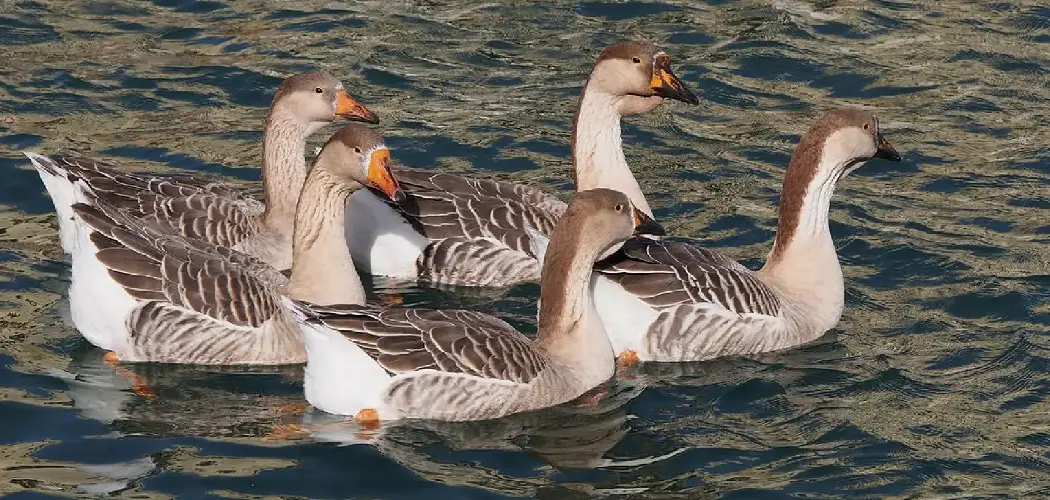Identifying female geese is essential for understanding flock dynamics and ensuring proper care, especially during breeding seasons. This guide will help you with how to identify female goose, behavior cues, and nesting habits. By learning these key traits, you’ll be equipped to recognize and appreciate the roles of female geese in your environment, whether on a farm, in a park, or near waterways.
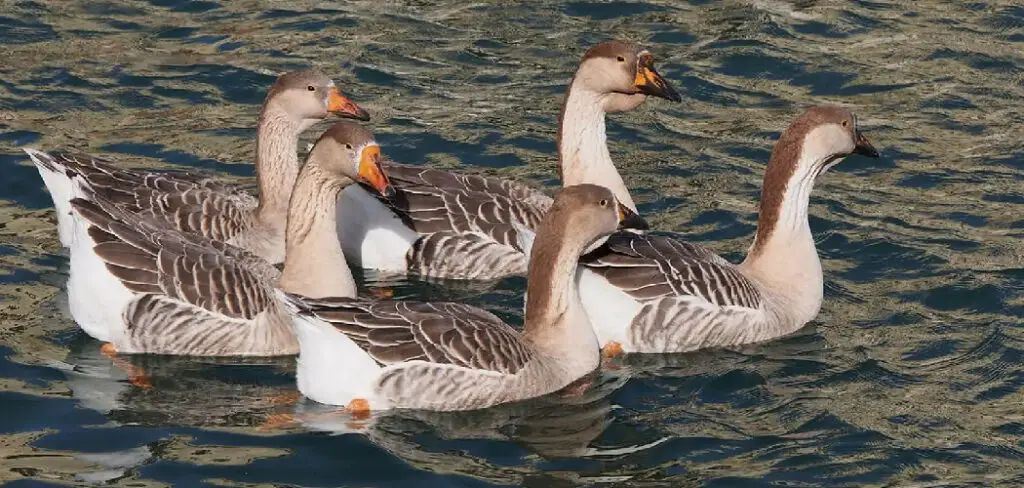
Importance of Identifying Female Geese
Understanding how to identify female geese plays a crucial role in effective flock management and conservation efforts. During the breeding season, recognizing females allows for more accurate tracking of nesting sites and ensures that they receive the necessary protection from potential threats.
Additionally, identifying female geese helps in maintaining a balanced sex ratio within the flock, which is vital for the overall health and stability of the population. On farms or in managed parks, knowing which geese are female can assist in targeted feeding and healthcare strategies, promoting better reproductive success and chick survival rates.
Overall, distinguishing female geese from their male counterparts contributes to fostering a healthy and thriving avian community.
Physical Characteristics
Female geese exhibit distinct physical characteristics that differentiate them from males, though the differences can sometimes be subtle. Generally, female geese are slightly smaller and lighter than males, possessing a more streamlined body.
Their necks are usually shorter and less robust, and their heads may appear more refined or narrow in comparison to the broader and more masculine heads of males. In terms of plumage, female geese often display subtler coloration without the bolder patterns seen in males.
The feathers around their abdomen and underside are usually softer, especially during the breeding season when they pluck these feathers to line their nests. Observing these physical traits can be instrumental in identifying female geese within a flock.

Differences Between Male and Female Geese
While male and female geese share many similarities, there are several key differences that can help in distinguishing between the two. One of the primary differences is size, with males typically being larger and heavier than their female counterparts. This size disparity can lead to males having a more imposing and robust appearance overall.
Behaviorally, male geese often exhibit more aggressive and territorial behaviors, especially during the breeding season. They are more likely to take up the role of guarding the nesting area and will fiercely protect their mates and offspring from any perceived threats.
Vocally, males and females also differ; males tend to have deeper, louder calls compared to the higher-pitched and softer calls of females. This can be particularly noticeable during mating displays or when the flock is under threat. Additionally, males may display more pronounced courting behaviors, such as head bobbing and neck stretching, aimed at attracting females and asserting dominance over rival males.
Another difference lies in their roles during nesting. While both male and female geese participate in nest building to some extent, females take on a more active role in incubating the eggs and caring for the goslings once hatched. Female geese will also pluck downy feathers from their abdominal region to create a warm and insulated nest lining, something that males do not typically do.
Understanding these differences not only aids in correct identification but also in managing and observing goose populations more effectively. By recognizing the distinct traits and behaviors of male and female geese, one can gain a deeper appreciation for their roles within the flock and contribute to their care and conservation.
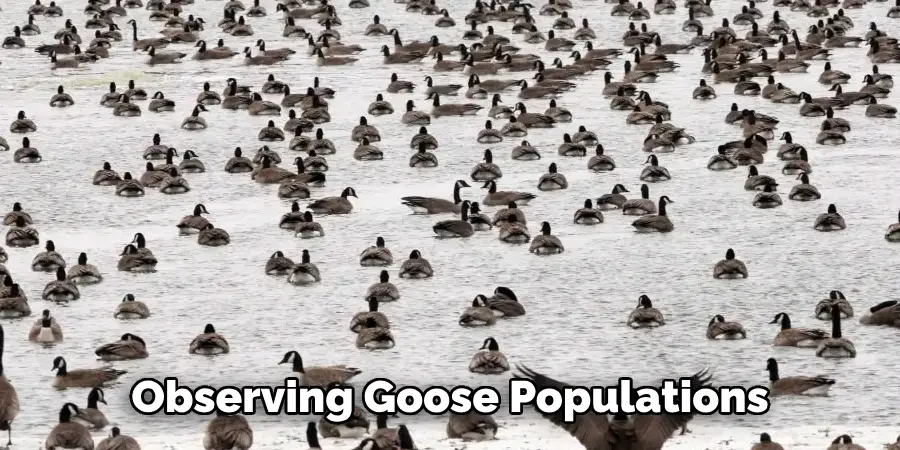
10 Methods How to Identify Female Goose
1. Physical Size and Weight
Female geese are generally smaller and lighter than their male counterparts. Observing the overall size and weight of the goose can provide an initial clue. Females tend to have a more streamlined body and shorter necks compared to males, who are bulkier and possess a broader chest.
Weighing the geese and comparing the results can also be helpful, although this method is more effective when you have a group of geese to compare against each other. While size alone is not definitive, it can be an important factor when combined with other characteristics.
2. Bill Shape and Color
The bill shape and color can also provide insights into the sex of a goose. Female geese often have a slightly shorter and narrower bill compared to males. In some species, the color of the bill may also differ slightly between sexes, with females displaying a duller hue.
Observing the bill in conjunction with other features can enhance the accuracy of sex identification. Noting any unique markings or subtle differences in coloration can provide additional clues, although these can be subtle and vary by species.
3. Feather Patterns and Coloration
Feather patterns and coloration can sometimes indicate the sex of a goose. Female geese often have subtler, less vibrant plumage compared to males, who might display more striking patterns and colors, especially during the breeding season.
Females may exhibit more uniform and consistent feather colors, lacking the contrasting patterns seen in males. Careful observation of the plumage can reveal these differences, although this method requires knowledge of the specific species’ typical coloration.
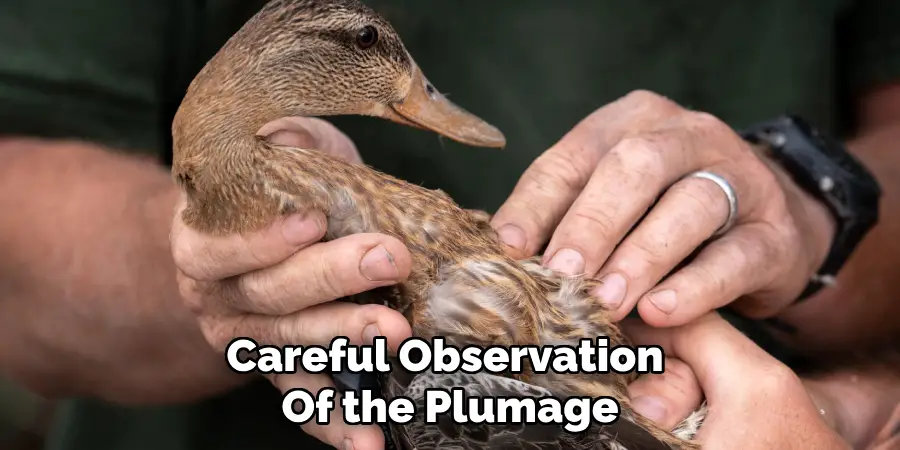
4. Vocalizations
Vocalizations are a key indicator of sex in geese, as males and females often have distinct calls. Female geese typically have higher-pitched and softer calls compared to the deeper, louder calls of males.
By spending time listening to the geese, you can begin to distinguish these vocal differences. Recording and comparing the sounds can be useful, especially if you are unfamiliar with the species’ specific vocal patterns. This method is particularly effective during mating and nesting seasons when vocal activity is heightened.
5. Behavioral Observations
Behavioral differences between male and female geese can provide significant clues. Females tend to be more nurturing and protective, especially during the nesting season. Observing the interactions within a flock can reveal these tendencies, with females often seen tending to nests and goslings.
Males, on the other hand, are more likely to exhibit territorial and aggressive behaviors, defending their mates and territory from intruders. Spending time watching the geese in their natural environment can highlight these behavioral distinctions.
6. Reproductive Anatomy
Examining the reproductive anatomy is a definitive method for identifying the sex of a goose. Vent sexing, which involves inspecting the cloaca for the presence of a phallus in males, can accurately determine sex.
This method requires experience and care to avoid harming the bird. It is usually performed on young goslings, as the anatomical differences become more pronounced with maturity. Proper training and handling techniques are essential to ensure the safety and well-being of the geese during this process.
7. Nesting Behavior
Nesting behavior is a clear indicator of female geese. Females are responsible for building nests, incubating eggs, and caring for the young. During the breeding season, females can be observed selecting nesting sites, gathering materials, and spending extended periods on the nest.
Males typically stand guard nearby, protecting the female and the nest. Observing these nesting behaviors can provide a reliable indication of the female goose, especially when combined with other identification methods.
8. Wing Shape and Length
Wing shape and length can vary slightly between male and female geese. Females often have shorter, more rounded wings compared to the longer, more pointed wings of males. This difference can be subtle and requires careful observation or measurement.
Examining the wings in relation to the body size can also help, as females’ wings may appear more proportionate to their smaller frame. While not a standalone method, it can be a useful supplemental indicator when combined with other characteristics.
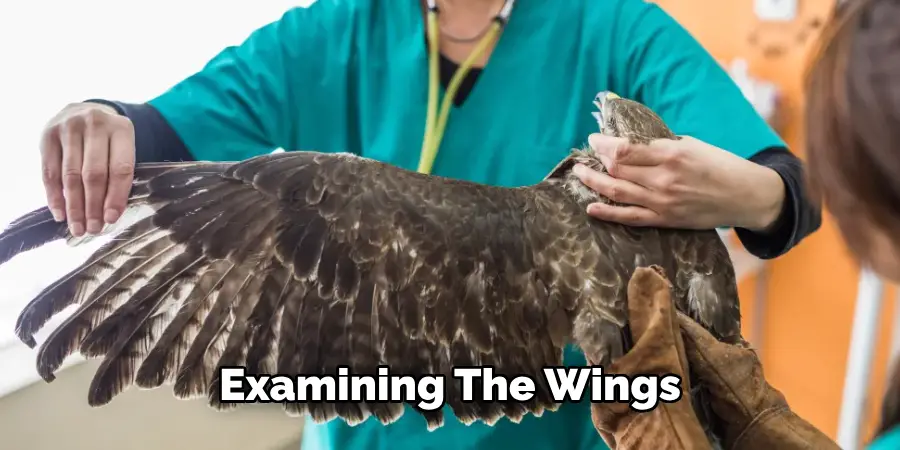
9. Eye Color and Shape
In some goose species, eye color and shape can differ between sexes. Female geese might have a slightly different eye color, such as a more muted hue compared to the brighter eyes of males.
The shape of the eye can also be a subtle indicator, with females potentially having rounder eyes compared to the more elongated eyes of males. Observing the eyes closely, especially in good lighting, can reveal these differences, though they may be minor and require experience to identify accurately.
10. Body Posture and Movement
Body posture and movement patterns can provide clues to the sex of a goose. Female geese often exhibit more cautious and deliberate movements, especially when tending to nests or young.
Their body posture may be lower and more protective, particularly during the breeding season. Males, on the other hand, display more upright and assertive postures, often standing tall to assert dominance. Watching the geese over time can reveal these behavioral and postural differences, contributing to accurate sex identification.
Conclusion
Each of these methods offers a unique approach to identifying female geese, but they are most effective when used in combination. Observing physical characteristics, vocalizations, behaviors, and anatomical differences can provide a comprehensive understanding of the sex of your geese.
Patience, careful observation, and a holistic approach are key to accurately identifying female geese. By applying these techniques thoughtfully, you can ensure proper care and management of your flock, contributing to their well-being and productivity. Thanks for reading, and we hope this has given you some inspiration on how to identify female goose!
About
Outdoor Fixes is a distinguished figure in the world of Diy design, with a decade of expertise creating innovative and sustainable Diy solutions.
His professional focus lies in merging traditional craftsmanship with modern manufacturing techniques,
fostering designs that are both practical and environmentally conscious. As the author of diy,
outdoorfixes delves into the art and science of outdoorfixes-making, inspiring artisans and industry professionals alike.
Education RMIT University
(Melbourne, Australia) Associate Degree in Design (Outdoor Fixes) Focus on sustainable design, industry-driven projects,
and practical craftsmanship. Gained hands-on experience with traditional and digital manufacturing tools, such as CAD and CNC software.
Nottingham Trent University
(United Kingdom) Bachelor’s in outdoorfixes.com and Product Design (Honors) Specialized in product design with a focus on blending creativity with production
techniques. Participated in industry projects, working with companies like John Lewis and Vitsoe to gain real-world insights.
Publications and Impact
In diy, Outdoor Fixes his insights on indoor design processes, materials, and strategies for efficient production.
His writing bridges the gap between artisan knowledge and modern industry needs, making it a must-read for both budding designers and seasoned professionals.

